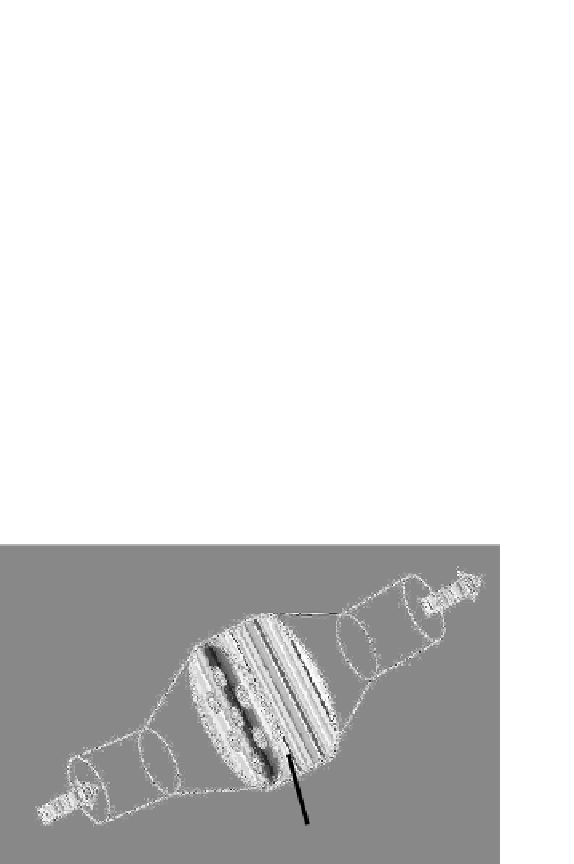Biomedical Engineering Reference
In-Depth Information
and the scaffold can dramatically increase the cell adhesion area.
Therefore, a perfusion bioreactor should be designed for installing
a lot of microchannels for supplying nutrients and oxygen and
removing waste products as real capillaries in 3D biodegradable
polymer having high-density cultured cells [22, 23]. Radisic et al.
fabricated microchannels in cylindrical biodegradable (polylactic
acid), and myocardial cells were seeded into the microchannels
with perfusion (Fig. 6e.3). Compared with cells cultured in a stirring
culture, the viability of culture cells expressing cardiomyocyte-
specific markers in the microchannels was found to be improved,
indicating that constructed 3D myocardial tissue can be prepared
with a perfusion culture method using a scaffold with a capillary
network [24-26]. Bioreactor systems give a biomimic circumstance
to supply oxygen in an in vivo-mimicking manner for overcoming
diffusion limitations found in conventional culture systems.
However, in these methods, the geometry of the cell location was
totally different from those in vivo situations, such as cell density
and capillary construct.
Biodegradable polymer with microchannels
Figure 6e.3
Perfusion bioreactor.
6e.5
In vivo Perfusion Bioreactor and in vivo
Tissue Culture
A vascular network having 10 μm diameter capillaries is found
to run among cells in the complex structure of real living tissue.


